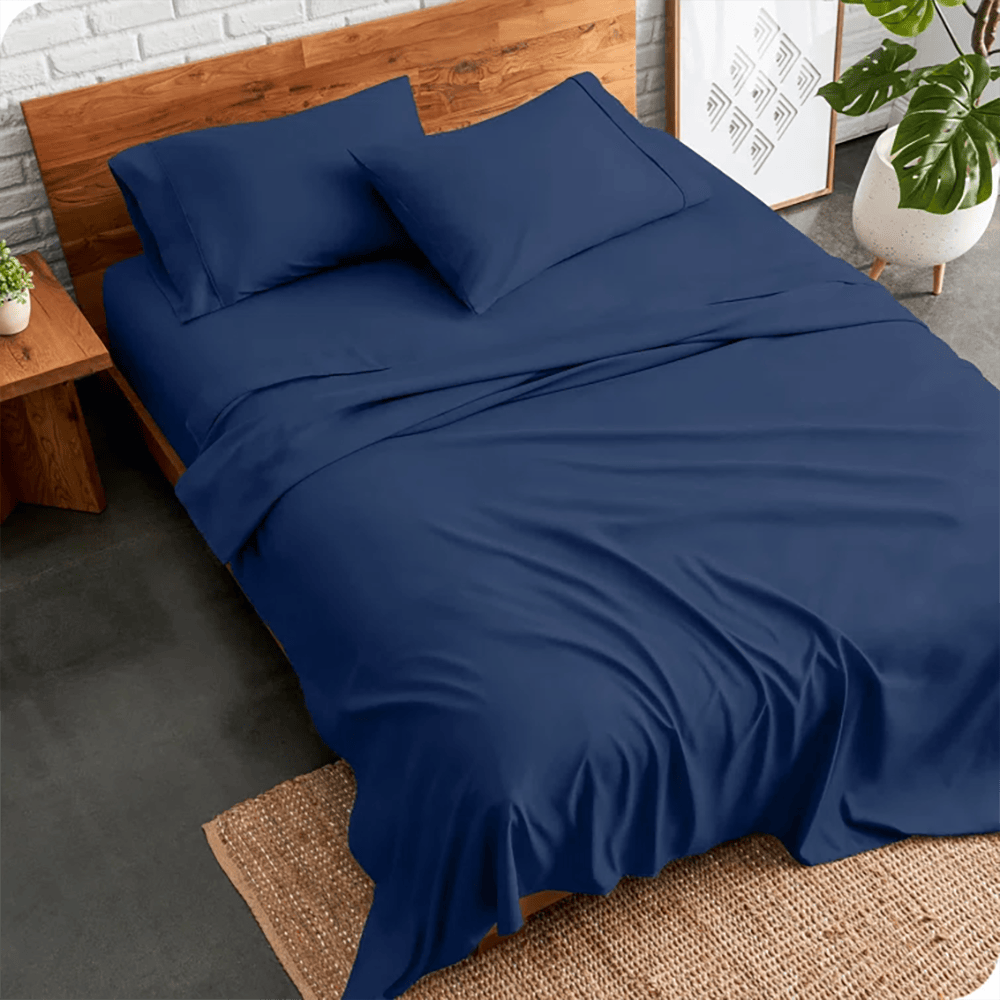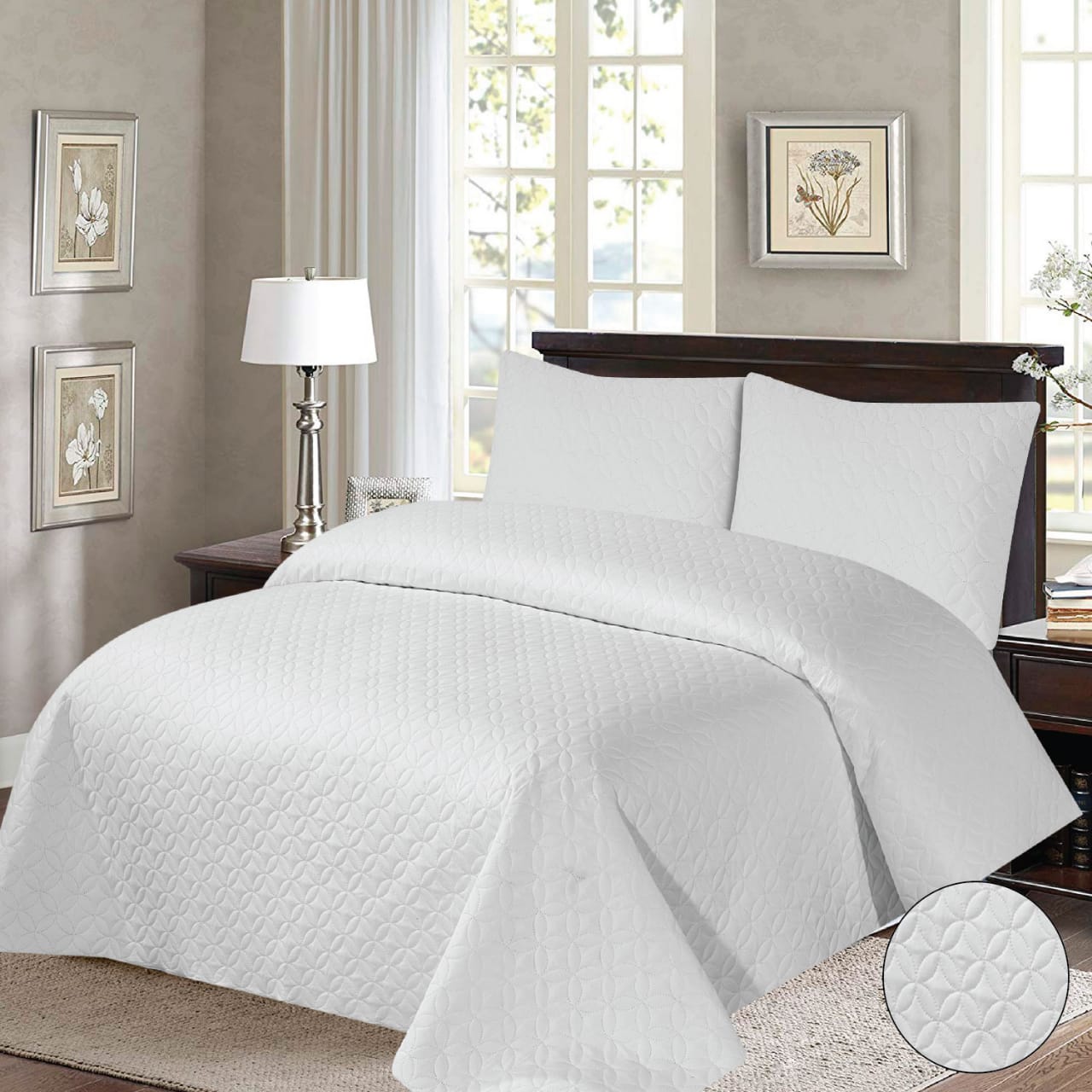Introduction:
A good night’s sleep is essential for overall well-being, and one often overlooked factor that contributes to a restful slumber is the quality of your bed sheets. Choosing the right bed sheets can make a significant difference in the comfort and aesthetics of your bedroom. In this comprehensive guide, we will explore everything you need to know about bed sheets – from materials and weaves to thread count and maintenance.
Material Matters:
The first and foremost consideration when selecting bed sheets is the material. The most common options include cotton, linen, silk, and microfiber.
Cotton: Known for its breathability and softness, cotton is a popular choice. Egyptian cotton and Pima cotton are premium varieties known for their longer fibers, resulting in smoother and more durable sheets.
Linen: If you prefer a more textured and relaxed feel, linen is an excellent choice. It’s highly breathable, wicks away moisture, and gets softer with each wash.
Silk: Luxurious and smooth, silk sheets are perfect for those who enjoy a touch of opulence. They are naturally hypoallergenic and regulate body temperature.
Microfiber: A more budget-friendly option, microfiber sheets are soft, durable, and resistant to wrinkles. They are an excellent choice for those with sensitive skin.

Weave Wonders:
The way sheets are woven greatly affects their feel and durability. The most common weaves are percale, sateen, and twill.
Percale: Known for its crisp and cool feel, percale is a plain weave that provides a matte finish. It’s a great choice for those who prefer a classic, hotel-like experience.
Sateen: Sateen sheets have a silky smooth surface and a lustrous sheen. They are woven in a way that exposes more threads on the surface, making them feel softer and more luxurious.
Twill: Twill sheets are durable and have a distinctive diagonal pattern. They are often heavier and warmer, making them ideal for colder climates.
Decoding Thread Count:
Thread count refers to the number of threads per square inch and is often used as a measure of a sheet’s quality. While a higher thread count can indicate a smoother fabric, it’s not the sole factor to consider.
Quality Over Quantity: A very high thread count (above 800) doesn’t always guarantee superior quality. The type of cotton and the weaving process also play crucial roles.
Sweet Spot: Sheets with a thread count between 300 and 600 generally offer a good balance of comfort and durability.
Perfect Fit:
It’s crucial to choose the right size for your bed to ensure a snug fit. Standard sizes include twin, full, queen, king, and California king. Deep-pocket sheets are designed for mattresses with added toppers.
Color and Style:
Bed sheets can enhance the overall aesthetic of your bedroom. Consider your bedroom’s color scheme and choose sheets that complement or contrast with it. Additionally, investing in a good set of white sheets can add a touch of luxury and elegance.
Caring for Your Investment:
Taking proper care of your bed sheets ensures longevity and continued comfort. Follow care instructions on the label, wash sheets regularly, and avoid using bleach, which can weaken fibers. Proper storage is also essential to prevent wrinkles.
Budget Considerations:
Quality bed sheets need not break the bank. While premium materials may come with a higher price tag, there are excellent options at various price points. Consider your budget and prioritize factors like material and weave based on your preferences.
Conclusion:
In conclusion, selecting the perfect bed sheets involves a thoughtful consideration of material, weave, thread count, size, color, and care. Investing in high-quality sheets tailored to your preferences can transform your bedroom into a haven of comfort and style. After all, a restful night’s sleep begins with the touch of the perfect bed sheets against your skin. Sweet dreams!

